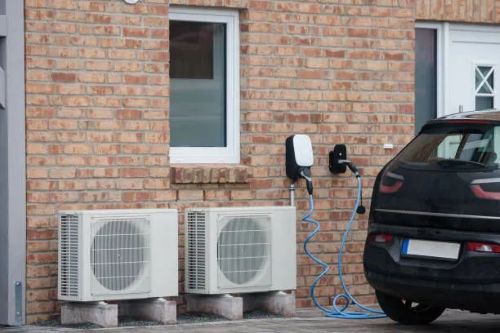


Outdoor EV Charging: Safety Standards, Installation Tips, and Future Innovations
As electric vehicles (EVs) become more prevalent, the demand for accessible and safe EV charging infrastructure is increasing. While many China EV Charger owners use home chargers, outdoor charging stations—installed in public areas, workplaces, and commercial lots—are critical for the widespread adoption of EVs. However, questions about the safety, durability, and regulatory compliance of outdoor EV chargers must be addressed to ensure a reliable charging experience in all weather conditions.
Are Outdoor EV Chargers Safe?
Yes, when installed correctly and used properly, outdoor EV chargers are safe. Modern chargers are designed to withstand harsh environmental conditions such as rain, snow, and extreme temperatures. They come equipped with safety features like ground-fault circuit interrupters (GFCIs), thermal regulation, and automatic shutoffs to prevent electric shocks, fires, and overheating.
1. National Electrical Code (NEC) – NFPA 70
The NEC provides guidelines for electrical safety in the U.S., including wiring, grounding, and protection requirements for outdoor EV chargers. Key features include:
GFCI Protection: Prevents electric shocks by shutting off power if leakage is detected.
Overcurrent Protection: Safeguards against excessive current that could cause fires.
2. International Code Council (ICC) Guidelines
The ICC recommends best practices for safe charger installation, such as ensuring chargers are ADA-compliant and spaced adequately to reduce fire risks.
3. State and Local Regulations
Local laws may require permits, inspections, and coordination with utilities to ensure safe and stable power distribution from fast chargers. Additionally, incentives may be offered for installing compliant chargers.
To ensure safety and durability, several factors must be considered during installation:
Site Location and Accessibility: Choose locations with easy access to electrical supply, good traffic flow, and sufficient lighting. Ensure the site is ADA-compliant and avoids obstructing emergency access.
Environmental Protection: Chargers should have an Ingress Protection (IP) rating of at least IP54, with higher ratings (IP65 or IP66) recommended for areas with heavy exposure to rain or dust.
Electrical Protection Features: Surge protection devices (SPDs) and thermal sensors help protect chargers from lightning, overheating, and electrical faults.
Myth 1: “Charging an EV in the rain is dangerous.”
Fact: Outdoor chargers are designed with waterproof enclosures and GFCI protection to prevent risks associated with wet conditions.
Myth 2: “Outdoor chargers overheat in summer.”
Fact: Quality chargers are equipped with thermal regulation systems and can operate in temperatures exceeding 120°F (49°C).
Myth 3: “Public chargers are more hazardous than home chargers.”
Fact: Public chargers are subject to stricter safety standards and often include more advanced safety features than home chargers.
Outdoor EV charging is essential to the future of electric transportation. By following safety standards and proper installation practices, outdoor chargers can provide safe, reliable, and efficient charging in all weather conditions. As the adoption of EVs continues to grow, outdoor charging infrastructure will play a key role in enabling cleaner, smarter mobility.
The road ahead is electric—and outdoor charging will be the bridge that connects drivers with cleaner, smarter mobility.Know more about Google SEO Directory
